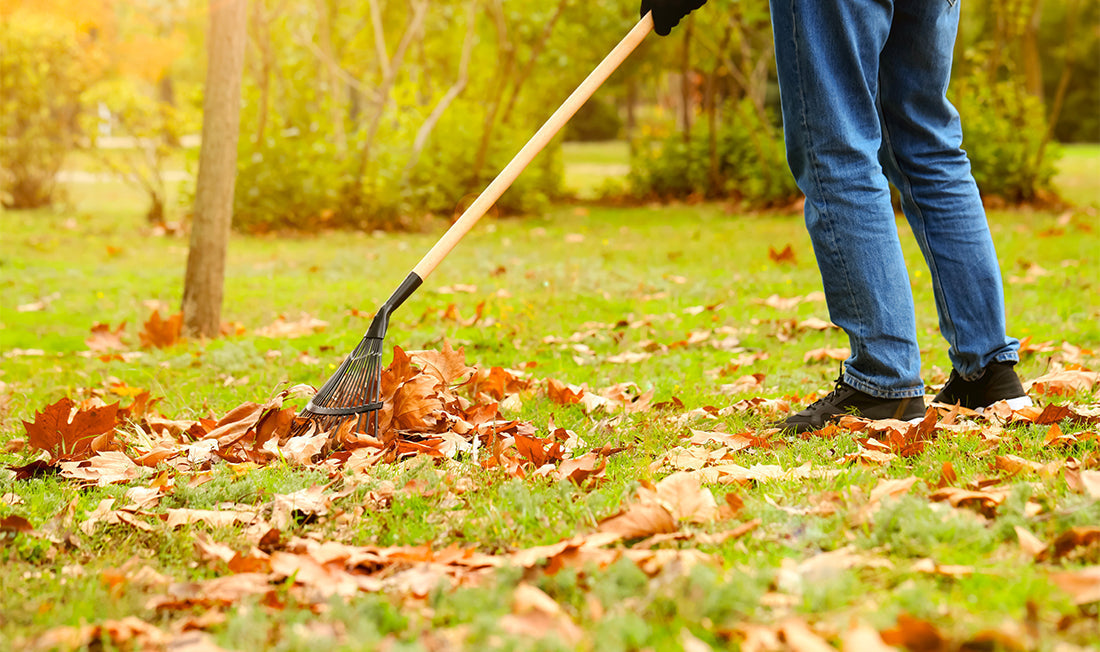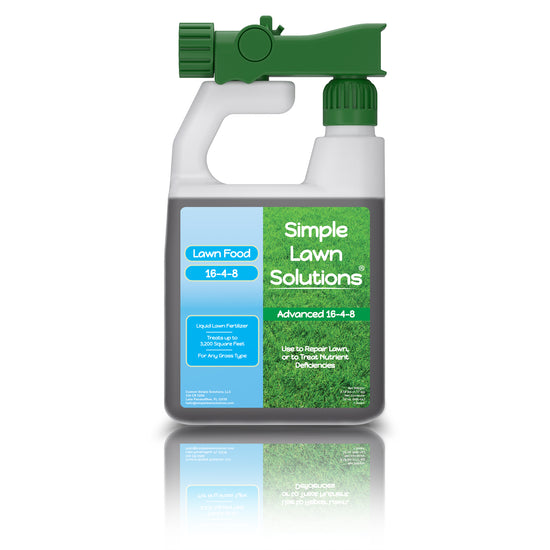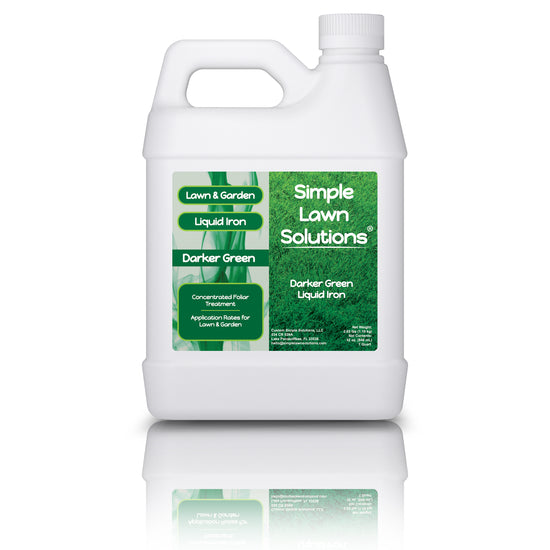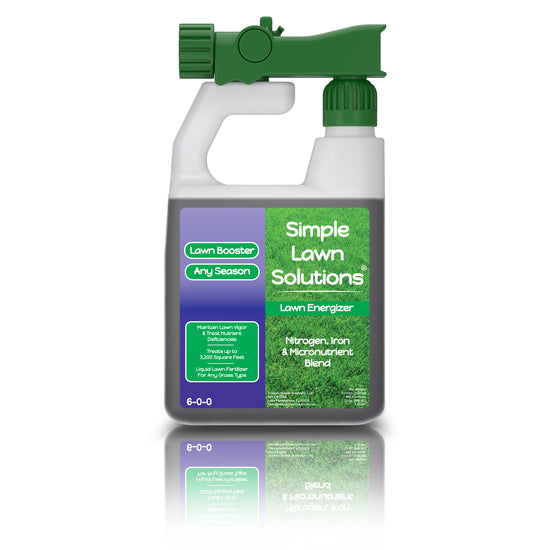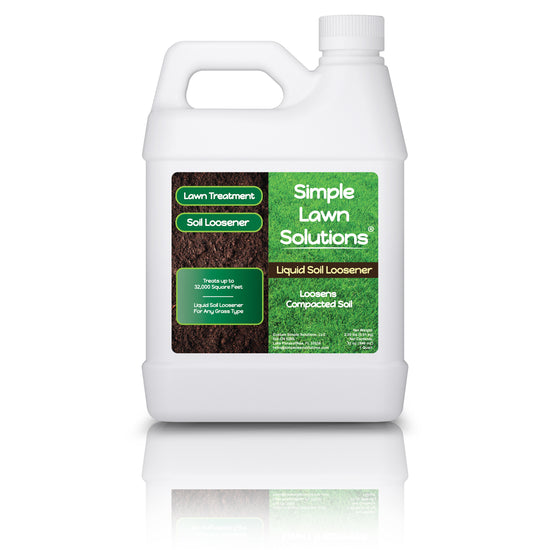Preparing warm-season grasses for winter ensures they remain healthy during the colder months and return strong in the following growing season. Warm-season grasses, such as Bermuda grass, Zoysia grass, St. Augustine grass, and Centipede grass, naturally enter a dormant phase during the winter, so your goal is to help them through dormancy and avoid damage from cold weather.
Gradual Reduction of Mowing
As fall approaches, gradually lower your mowing height to remove excessive top growth and help the lawn transition more easily into dormancy. Avoid cutting the grass too short, as this can stress the turf and expose it to frost damage. For most warm-season grasses, reduce the mowing height by about 1/2 inch from the regular growing season height. Once your area experiences the first frost and the grass goes dormant, you can stop mowing altogether.

Early Fall Fertilizer for Lawns
Apply Simple Lawn Solutions 3-18-18 Lawn Food in early fall, focusing on a lower nitrogen ratio, as too much nitrogen can encourage excessive growth that may be damaged by cold. Warm-season grasses also need potassium to strengthen their roots and prepare for dormancy. Stop applying nitrogen-rich fertilizers at least 6–8 weeks before the first expected frost, as late-season nitrogen can promote tender growth that is easily damaged by frost.
Watering and Irrigation
As temperatures cool, the growth rate of warm-season grasses slow, and so should your watering schedule. Overwatering in late fall can significantly promote disease as grass growth slows and the soil stays cooler.
Water deeply before the first frost to keep the soil hydrated, which helps protect roots from freezing temperatures. However, after the grass has gone dormant, reduce or stop watering except during arid winters.
Thatch Removal and Aeration (Early Fall)
Thatch is a layer of dead organic matter that can build up between the soil and grass blades. Excessive thatch, more than 1/2 inch thick, can insulate the soil and prevent air, water, and nutrients from reaching the roots. Dethatching the lawn early in the fall helps the grass 'breathe' before it goes dormant. Core aeration, also done in early fall, relieves soil compaction, enhances root development, and improves nutrient and water absorption, allowing the lawn to store more energy in the roots before winter.

Fall Weed Control (Late Fall)
Apply a pre-emergent herbicide to prevent winter weeds like Poa annua (annual bluegrass) from germinating, as they can take over when warm-season grasses go dormant. If any weeds have already emerged, use a post-emergent herbicide to treat them before the grass goes fully dormant. Be sure to use a herbicide labeled for your specific grass type.
If you’re dealing with winter annual weeds (e.g., chickweed, poa annua, or henbit), apply a pre-emergent herbicide in early fall to prevent weed seeds from germinating. For existing broadleaf weeds like dandelions, use a post-emergent herbicide to eliminate them before winter. Fall is the best time for weed control, as weeds store energy in their roots, making herbicides more effective.
Pest and Disease Management
Some pests, like grubs, may still be active in the fall. If you notice signs of damage, use a pesticide labeled for grub control to prevent them from burrowing deeper into the soil for winter. Warm-season grasses can also be susceptible to fungal diseases, especially if overwatered. Watch for signs of fungus, such as discolored patches or dead spots, and treat with a fungicide if necessary.
Topdress and Protect Bare Areas
If your lawn has bare or thin spots, you can overseed with ryegrass (common in Bermuda lawns) to maintain a green lawn throughout the winter. Otherwise, leave bare areas alone until spring, when it's time to reseed with warm-season grasses. Adding mulch around trees and shrubs helps insulate their roots and prevent weed growth.
Peform Fall Overseed (If Needed)
If your lawn has bare or thin spots, overseed with a cool-season grass mixture to improve density and help it recover more quickly in the spring. Overseeding should be done in early fall when daytime temperatures are still warm enough to encourage germination, and night temperatures are more relaxed, which favors cool-season grass growth. After overseeding, water regularly until the new grass is established, ensuring it doesn’t dry out during the establishment phase.
Remove Leaves and Debris
Regularly rake or use a leaf blower to remove fallen leaves and other debris from your lawn. A layer of leaves can smother the grass, block sunlight, and create a breeding ground for fungal diseases. If the leaves aren’t too thick, you can mulch them with your mower, as shredded leaves can decompose and provide valuable nutrients for the lawn.

Winterize Your Irrigation System
If you have an irrigation system, drain and blow out the pipes to prevent freezing and bursting over the winter. Additionally, shut off outdoor faucets and hoses and store hoses indoors to prevent them from freezing and cracking.
Final Mowing and Clean-Up
After your lawn has gone dormant (or after the first frost), give it a final mowing at about 2 to 2.5 inches to help prevent mold or fungal diseases during the winter. Take time to clean and service your lawn equipment, such as your mower, before storing it for the winter, including sharpening blades, changing the oil, and cleaning the deck.
Snow Mold Prevention
In regions with significant snow cover, snow mold (a fungal disease) can affect cool-season grasses. To reduce the risk, avoid applying too much nitrogen in late fall, as lush growth can be more susceptible, and keep thatch levels low to prevent the disease from thriving under snow. If snow piles up in certain areas, rake it lightly to spread it out and prevent prolonged coverage, which can encourage mold.
Following these steps will help your cool-season lawn enter the winter months healthy and prepared to thrive when spring returns. Proper fall care ensures that the lawn can withstand the cold, reduce weed pressure, and have a better chance of a quick green-up in the spring.


